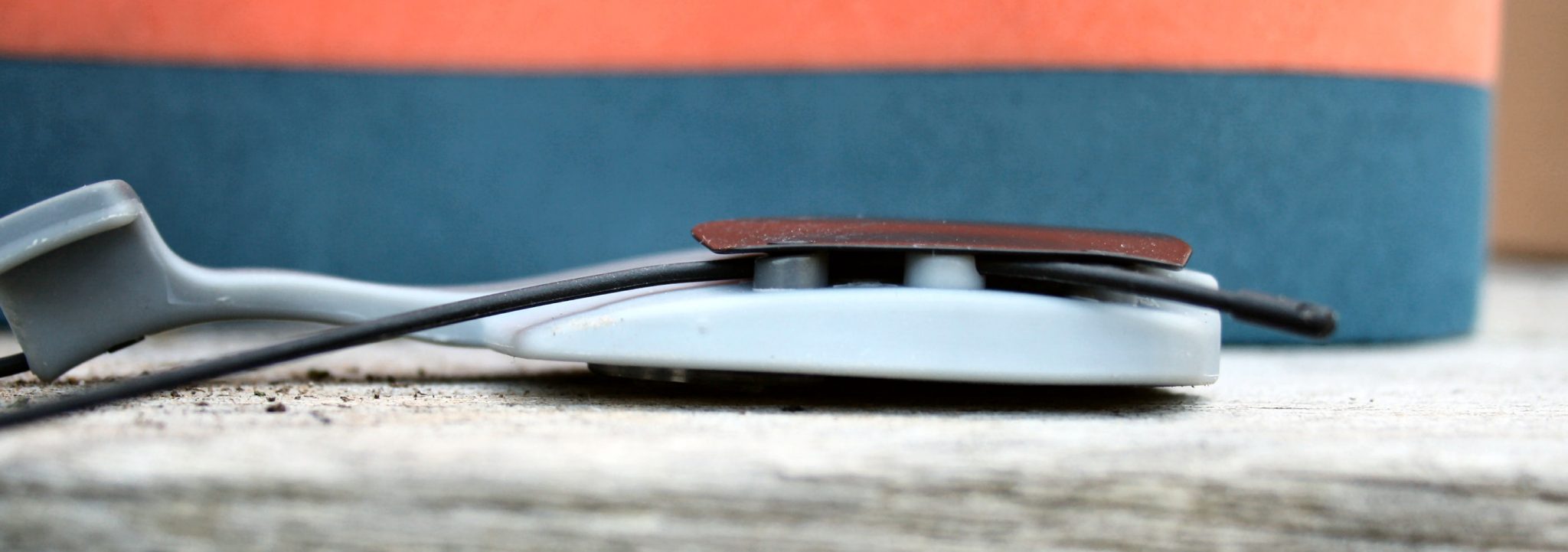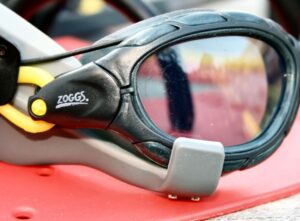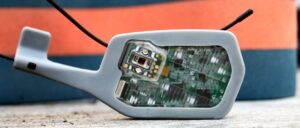Instabeat Review
 I tend to do a combination of group lane swimming and then, in summer, a lot more OWS. I have my gadgets that nicely record all these efforts but most of them don’t really give too much LIVE data feedback into my swim workout at any given instant. Sure I check the rest timer between intervals but I certainly never look at my swim watch halfway down a lane.
I tend to do a combination of group lane swimming and then, in summer, a lot more OWS. I have my gadgets that nicely record all these efforts but most of them don’t really give too much LIVE data feedback into my swim workout at any given instant. Sure I check the rest timer between intervals but I certainly never look at my swim watch halfway down a lane.
Having said that I really would be interested to have instantaneous feedback for pace, distance and heart rate. The catch is that I would like to have it delivered via a Heads Up Display (HUD) in MY goggles. I don’t think there is any single product that can do that right now but INSTABEAT is on the way to becoming one of them.
A question to answer: Is there a glittering prize for the first swimming goggles company to produce an all-singing, all-dancing product for a range of swimmers’ data needs?
What You Get
You get the rather unusual-looking INSTABEAT device and a free iOS app – no Android right now. There is also a special charging cable and a carry-pouch.

The INSTABEAT device requires that you use YOUR swimming goggles and it should work with many or most types.
SetUp
You can read the manual on how to set it up. The broad gist of attaching to your goggles is
- Position the lights so they just shine through the bottom of your right goggle
- Slide one or both of your right-hand side straps fully underneath the strong metal clip
- Secure the thin cable all-around your right goggle and pull to secure once in place on your head.
I had some issues with the setup which, I believe, were linked to my particular favourite goggles…Predator Flex. I found getting the position to be initially difficult, I found that sliding both of my thick straps under metal clip permanently changed the clip’s spacing from the main unit. Furthermore, sometimes the thin cable was pulled so far when I put my goggles on that I couldn’t find the end to tighten it. Not a great start. However, after the familiarity of a few uses, it did become much easier
The bottom line was that this is not as easy as simply clipping on a new HRM, pairing to an app and off you go. I think many of us have come to expect that from the products we buy.
Swimming with Instabeat
Instabeat delivers your instant HR zone directly to your eye and so is immediately actionable. There is zero scope for confusion…unless you have set your HR zones incorrectly via the app 😉
Although there are only 3 custom zones, there is an upper and lower element of each zone corresponding to, for example, one green or two green LEDs. Thus if you train with the 5 zones you should be fine as one colour of LED covers two zones.
- Blue for low effort
- Green for fitness
- Red for maximum performance
I had zero wear-issues when swimming. All was good. The Instabeat stayed in place, didn’t flip and seemed to produce the right data (LED lights) all through my sessions.
The Instabeat iOS App
The Instabeat app is relatively basic. You have all the account stuff but the setting between open water and pool is here too and that’s a little bit annoying when you’re at the side of the pool or lake with the wrong setting loaded up and your phone is somewhere else.
Nevertheless, you get some more insight here into your workout, namely; lap time, pace, distance, stroke type, rest time and workout intervals.
Instabeat – Technical Specs
SENSORS AND COMPONENTS:
- Optical heart rate sensor powered by PHILIPS
- 3-axis accelerometer
- 3-axis gyroscope
- 3-axis magnetometer
- Blue, Green, Red lights customizable on your mobile app
- 0-100% light brightness customizable on your app
- 10 hours memory storage of detailed heart rate and motion data (3-second interval)
- BLE 4.2 for ultra-fast wireless session sync with your mobile app
BATTERY:
- 5 hours + rechargeable LiPo battery (your battery life is related to your light brightness)
- 1 hour charge time (0-100%)
- Custom charging cable
PHONE COMPATIBILITY:
- iPhone 5S or later only
- Android coming soon
KEY NUMBERS:
- Optical heart rate sensor powered by PHILIPS
- Weight: 27 grams (lighter than goggles!)
- Thickness: 6mm (lower profile than your goggle lens)
- 30 meters waterproof
So when you are using Instabeat it does what it sets out to well. the question then becomes “has it set out to do the right thing!” Let’s take a step back to look at that.
Who Is Instabeat Aimed At?
This is a more tricky question than you might, at first, think.
I would guess that these are the main target customers
- Gadget-loving Triathletes
- Fitness swimmers (I assume this is the major target market)
- Competitive swimmers
 Remember that the only instantly actionable data is heart rate ZONE. So on that basis, it would be reasonable to say that a fitness swimmer could get a clear benefit from knowing if they are in the fat-burning zone or not. Would they buy this product in droves?…probably not.
Remember that the only instantly actionable data is heart rate ZONE. So on that basis, it would be reasonable to say that a fitness swimmer could get a clear benefit from knowing if they are in the fat-burning zone or not. Would they buy this product in droves?…probably not.
I’m less convinced that a gadget-loving triathlete would just want a heart rate zone. A data-driven triathlete might want to see the actual heart rate. Fine; colour-code that HR number if you want to but I want the detailed data. Bear in mind also that a data-driven triathlete will probably already have HR swim data from existing tech for the post-workout analysis. So it’s just the live HR data that is missing for this target market. Indeed if you can get live HR data then you’d probably also want other live metrics in your HUD like pace, lengths, splits and even ‘bearing’ for OWS – and then we’d go down a whole looong list of other metrics that the data-driven triathlete would ‘need’ as well. And I’m guessing that a GPS chip in a head-based location would also make a good track.
I’m not a competitive swimmer by a long shot. But those that I know and those that I train with (they’re in the other lane!) tend not to have the gadgets. Whilst I have seen more of them move towards swim tech in the last couple of years, they mostly seem to only need a simple timer to be a lot faster than me. Like me, I’m sure most of them would claim to be able to pace by RPE but yet still look for reassurance in their splits. Sure some of the competitive swimmers might benefit from a little more precision in pacing. I just need a little more convincing that these guys will want this kind of tech (or ANY tech) in large numbers.
So I’m seeing Instabeat, in its current form, as mostly being of interest to a relatively small subset of the more serious fitness swimmers.
Current Products Competing with Instabeat
These are a few of the current crop of HUD swimming aids
- INSTABEAT – heart rate zones in your own goggles
- SwimAR – pool metrics and GPS wayfinding, no HR
- Zwim – pool metrics including HR
- Form Athletica – pool metrics, no HR. Their goggles.
- Phlex Edge – HR, your goggles but no HUD
- Triton 2 – coach-focussed live data

Swimming HUDs – Where’s it going
Swim.bike.run HUDs seem to be one of those areas that are ripe for future innovation. Whether or not anyone really needs a run or bike HUD is another matter entirely. I somehow doubt it. Yet we’ve seen a couple of companies that have delivered meaningful products in the bike space (eg Recon)
The issue with bike and running is that there is almost always a MUCH easier way to instantly see oodles of data – it’s called “your sports watch” or “your bike computer“.
With swimming, there probably IS a genuine “need” to have live metrics delivered either via a HUD or audibly or to a pool-side coach. The metrics are all known and the motion sensing, heart rate monitoring and GPS, the tech already exists and is well-advanced in terms of miniaturisation and energy efficiency. I’d imagine it’s just the display tech and a huge chunk of R&D spend that is holding things back for an all-conquering swimming HUD.
Basically, the tech is being developed by small companies with limited resources and they ultimately need to create something smaller than a wristwatch to fit unobtrusively onto your head AND with a novel display mechanism. To make the task even harder the best solution is going to be so generic that it will fit any pair of swim goggles or swim masks. All of that is DIFFICULT (yet possible) and that difficulty is compounded almost certainly by a much, much smaller end-market than there is for sports wristwatches and bike computers ie it’s financially difficult as well as just technically difficult. On the other hand, the smaller market means there is less competition and so, perhaps, a greater chance of getting a reasonable market share.
So: to answer “where’s it going”, might be that I could say it’s going somewhere but I’m just not quite sure where nor how quickly 😉
To me, the key elements are pacing (from HR and pace), bearing/direction (for OWS), and efficiency feedback to subtle stroke changes (from pace/SWOLF).
Some of the competing products seem ‘better’ than Instabeat to me. But they require you to pay quite a bit of money for THEIR goggles. You can’t use your tried and trusted brand any more. Even I am reluctant to change from my Predator Flex brand and I don’t even like the Predator Flex that much.
More: instabeat.com






